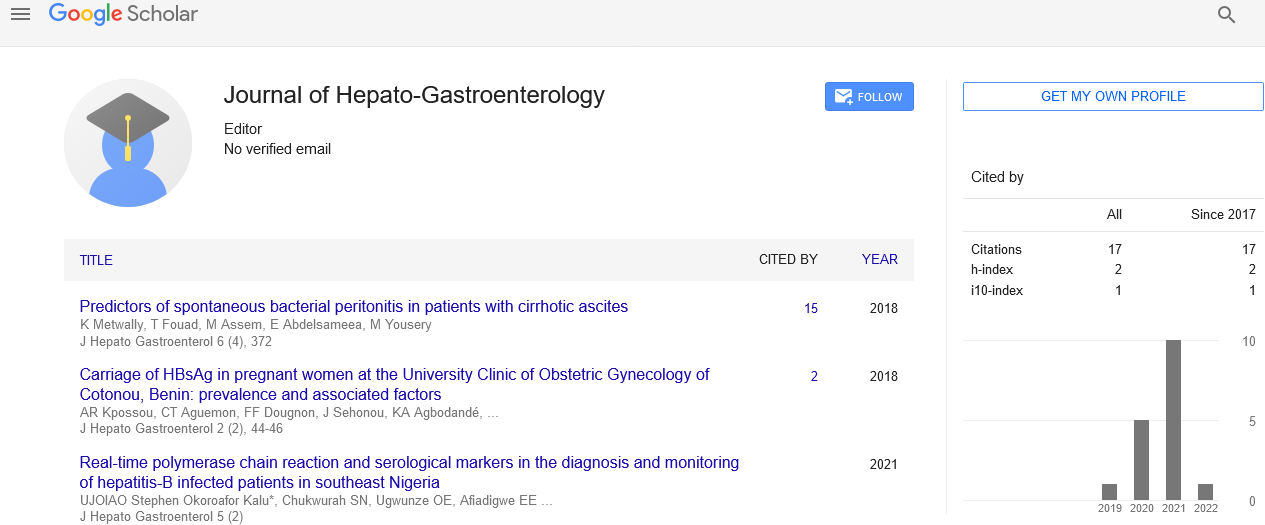A short note on Hemorrhagic Complications after Pancreatic Surgery
Received: 07-Mar-2022, Manuscript No. PULHG-22-P-4429; Editor assigned: 11-Mar-2022, Pre QC No. PULHG-22-P-4429 (PQ); Reviewed: 15-Mar-2022 QC No. PULHG-22-P-4429 (Q); Revised: 23-Mar-2022, Manuscript No. PULHG-22-P-4429 (R); Published: 05-Apr-2022, DOI: 10.37532/Pancreatic-medicine.6.2.1-2
This open-access article is distributed under the terms of the Creative Commons Attribution Non-Commercial License (CC BY-NC) (http://creativecommons.org/licenses/by-nc/4.0/), which permits reuse, distribution and reproduction of the article, provided that the original work is properly cited and the reuse is restricted to noncommercial purposes. For commercial reuse, contact reprints@pulsus.com
Abstract
A Whipple strategy - otherwise called a pancreatic oduodenectomy - is a mind boggling activity to eliminate the top of the pancreas, the initial segment of the small digestive tract (duodenum), the gallbladder and the bile channel. The Whipple strategy is utilized to treat cancers and different issues of the pancreas, digestive system and bile conduit. Discharge after pancreatic medical procedure is a typical event, representing 5-12% of post-pancreatectomy entanglements. Significant gamble factors for discharge can be arranged transiently as pre-employable, intra-usable, and post usable, and incorporate perioperative coagulopathy, specialized disappointment of hemostasis at stitch line, post-usable pancreatic fistulas grade B and C, biliary spillage, limited or then again intra-stomach sepsis, higher age and Body Mass Index (BMI), and intraoperative bondings, among others.
Key Words
Whipple; Pancreatic
Introduction
Post-pancreatectomy discharge can be gentle or extreme, with evaluating from A to C, and timing from ahead of schedule (inside 24 hours) to late (following 24 hours): demonstrative also restorative modalities shift generally founded on the reviewing and area of post-pancreatectomy discharge, while non-employable the executives are adequate for a gentle grade. A post-pancreatectomy drain, intercessions like angiography for extra-luminal and endoscopy for intraluminal drain are expected for late grade B or C discharge. Re-investigation to get hemostasis is liked in hemodynamically temperamental patients and is just utilized for late postpancreatectomy drain after the disappointment of less intrusive modalities.
Background and A Brief Overview of The Study
Late post-pancreatectomy discharge is related with an unfortunate guess, particularly in low-stream focuses. Cautious checking for sentinel dying, as well as command over modifiable gamble variables can assist with diminishing the episode weight of post-pancreatectomy drain, in this manner decreasing long haul bleakness and mortality after pancreatic medical procedure. The pancreas has been portrayed as "the most unforgiving organ in the human body," inferable from its deepseated area and various significant adjoining structures-the majority of them vascular. Normal usable methodology managing the pancreas incorporate pancreaticoduodenectomy (Whipple's strategy), and distal pancreatectomy; while signs for the previous are restricted to dangerous injuries including the head of pancreas and periampullary locale, as well as obstinate torment from persistent pancreatitis; pancreatic resections, with a measly 25% ascribed to distal pancreatectomy. Absolute pancreatectomy, when the main methodology accessible to manage threatening pancreatic growths, has presently generally been deserted, regardless of examination appearing that it could have great long haul results. Endurance rates related to this activity are still generally low, with a 5-year endurance pace of just 13% revealed by an audit of the National Cancer Database While alterations of pancreatectomy, for example, pylorussafeguarding (PPPDpylorus saving pancreaticoduodenectomy), and subtotal stomach-protecting pancreaticoduodenectomy are progressively acquiring consideration, their clinical legitimacy] against conventional Whipple pancreaticoduodenectomy still remaining parts problematic. Techniques, for example, pancreatic enucleation are related to lbloodoodm misfortune, more limited usable period, Intensive Care Unit (ICU) and medical clinic stay, and low pace of mortality; be that as it may, they can be performed just in a subset of the patients with pancreatic cancers what's more require progressed careful specialization abilities. Signs for the last option are more broad, managing strong and cystic cancers of the body and tail of the pancreas, as well as with pseudocysts or pancreatic fistulas emerging from interruption in the in advance of referenced districts. Pancreaticoduodenectomy represents most of pancreatic resections, with a measly 25% credited to distal pancreatectomy.
CONCLUSION
Late PPH is more normal, bookkeeping for a high dismalness and mortality. In clinical practice, the ISGPS arrangement ought to be utilized to order PPH, in view of its huge significance; be that as it may, consideration ought to be made so as not to neglect grade-A drain. Sentinel drains messenger the chance of Postponed Postpartum Hemorrhage (PPH), and ought to be painstakingly checked. CTangiography ought to be utilized to assess all suspected or real instances of PPH, and the board ought to be arranged as indicated by proposed calculations, with investigation given inclination just in hemodynamically unsound patients or after disappointment of interventional strategies. Interventional angiography is an original technique to bargain with extraluminal and pseudo-intraluminal discharge, also focuses should make courses of action with respect to its accessibility. Ultimately, hazard factor checking and decrease can assist with forestalling the frequency of PPH, as well as the related mortality.






